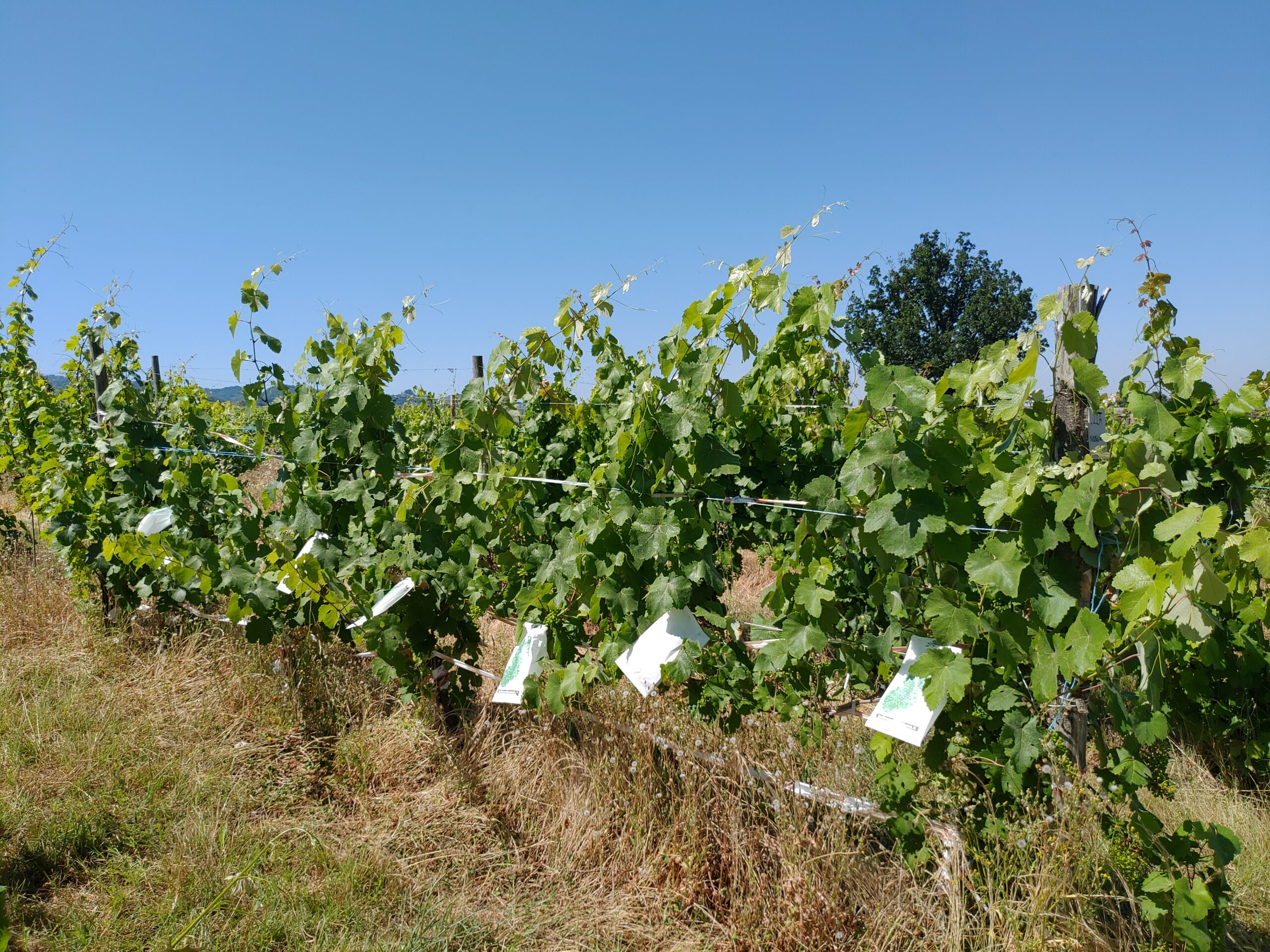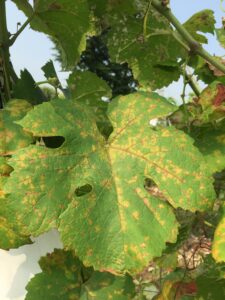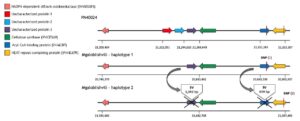19 May 2025
Georgian grapevine ‘Mgaloblishvili’ genome and its secrets revealed
Genome published in scientific paper

The University of Milan, in collaboration with University of California Davis, the Caucasus International University, and KeyGene, published the genome of the Georgian grapevine variety Mgaloblishvili, the first-identified Vitis vinifera variety resistant to downy mildew in Horticulture Research. The genome, sequenced as a result of KeyGene’s DNA-day contest in 2021, was studied to characterize its resistance loci, gaining new resources to fight the terrible disease affecting grapevine.
The Mgaloblishvili genome, sequenced using PacBio HiFi technology, will be the first genetic reference for the varieties originating from the Caucasus, one of grapevine’s centers of domestication.
It will help scientists to better investigate varieties from that region, allowing faster discovery of useful lead genes coding for agronomical traits which are relevant for breeding new resistant and resilient grapevine varieties.
“The Mgaloblishvili variety is a Vitis vinifera variety that originates from Georgia in the Caucasus region, one of the two places where the domestication of grapevine took place. It is known for its resistance to downy mildew, a trait usually missing in the other V. vinifera varieties employed in viticulture production.
Analysing the genome of this unique variety can allow us to gain new inspiring insights into plant-pathogens interaction, for the better utilization of resistance traits in breeding programs”, said Valentina Ricciardi, former PhD student who worked on the project.
Research boosted by KeyGene's help
 The young researcher recalls how winning KeyGene DNA-Day contest worked as the inspirational event to realize the project: “The selection of Mgaloblishvili as the winner of the contest allowed us to obtain its High-Molecular Weight (HMW) DNA, without spending time and efforts into a tricky procedure to perform on species like grape”. She then continued:
The young researcher recalls how winning KeyGene DNA-Day contest worked as the inspirational event to realize the project: “The selection of Mgaloblishvili as the winner of the contest allowed us to obtain its High-Molecular Weight (HMW) DNA, without spending time and efforts into a tricky procedure to perform on species like grape”. She then continued:
“Once the DNA was available, it worked as a symbol of the research community interest in this peculiar variety, propelling us into the further steps necessary to adequately explore it”
Senior researcher Gabriella De Lorenzis, who supervised Ricciardi during her studies, explains how the work of the team studying the Mgaloblishvili grapevine, comprising also the Plant Pathology group represented by senior researcher Silvia Laura Toffolatti, started around 20 years ago, in a collaboration with two Georgian research partners: the Faculty of Viticulture and Winemaking, Caucasus International University, and the National Wine Agency of Georgia, both in Tbilisi.
“Obtaining Mgaloblishvili’s genome made it possible to identify crucial genetic differences between the Georgian variety and the other cultivated varieties. In this way it becomes possible to better understand and decipher this unique reservoir of genetic variability, making these precious resources available to scientist and breeders” said De Lorenzis.
Mgaloblishvili genome will serve as a 'standard'
Before Mgaloblishvili, no other V. vinifera variety from the domestication center was sequenced and compared to other available genomes. “The Georgian variety genome will serve as a reference for grapevine studies focused on the identification and understating of important agronomical traits for the viticulture sector, with huge implications for their applicability in breeding programs”, said Dario Cantu’, Professor at University of California, Davis, that hosted Ricciardi for part of her studies.

Comparison of the gene content of the Rpv29 loci of Mgaloblishvili and PN40024
Combining the insights from Mgaloblishvili’s genome with results of earlier research of the Milano team, made possible to dissect the variety resistance loci, defining the mechanism of action underlining them “Mgaloblishvili resistance results from the presence of many small structural variants in the genome, causing loss of susceptibility factors and an improved regulation of defence-related genes”, stated Ricciardi.
“These results will inspire the research of many other interesting traits in the grapevine domestication centre, giving insights on their applicability in breeding programs for durable resistance to multiple stresses”, concluded De Lorenzis.
The genome of Mgaloblishvili has been published in the June 2025 issue of Horticlture Research.
Read more
- News item of May 2021 about the winning of the DNA-Day contest by the gravevine research team of the University of Milan
- KeyGene’s research on technology innovation in DNA & RNA Technology
- Learn more about licensing KeyGene’s innovations in DNA & RNA technology